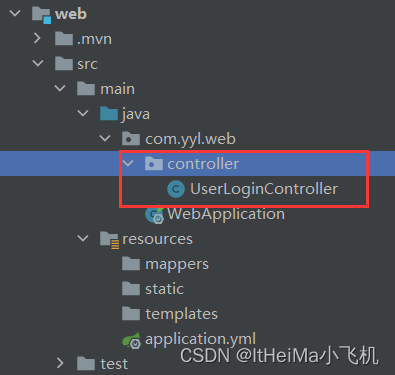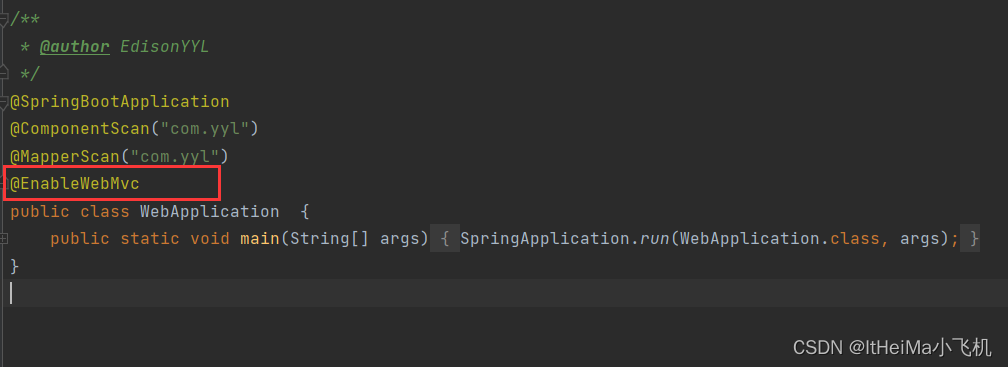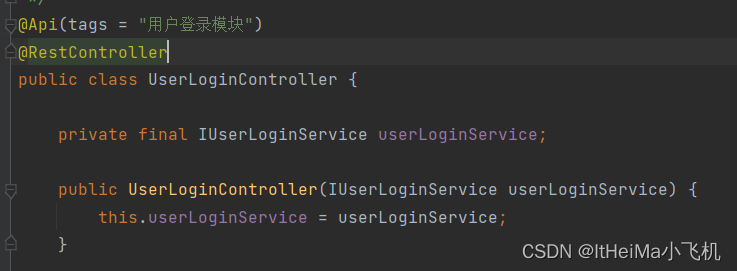Swagger的配置
提示:依赖+配置即可
1、依赖
<dependency>
<groupId>com.github.xiaoymin</groupId>
<artifactId>knife4j-spring-ui</artifactId>
<version>3.0.3</version>
</dependency>
<dependency>
<groupId>io.springfox</groupId>
<!--提供了使用Swagger和OpenAPI规范创建API文档的支持。-->
<artifactId>springfox-boot-starter</artifactId>
<version>3.0.0</version>
</dependency>
2、Swagger 配置类的书写
我的控制类的路径

注意事项有注释
package com.yyl.common.config;
import org.springframework.context.annotation.Bean;
import org.springframework.context.annotation.Configuration;
import org.springframework.web.servlet.config.annotation.ResourceHandlerRegistry;
import org.springframework.web.servlet.config.annotation.WebMvcConfigurer;
import springfox.documentation.builders.ApiInfoBuilder;
import springfox.documentation.builders.PathSelectors;
import springfox.documentation.builders.RequestHandlerSelectors;
import springfox.documentation.service.ApiInfo;
import springfox.documentation.service.Contact;
import springfox.documentation.spi.DocumentationType;
import springfox.documentation.spring.web.plugins.Docket;
import springfox.documentation.swagger2.annotations.EnableSwagger2;
import springfox.documentation.swagger2.annotations.EnableSwagger2WebMvc;
/**
* swagger接口文档的配置
*/
@Configuration
@EnableSwagger2
public class Knife4jConfiguration implements WebMvcConfigurer {
@Override
public void addResourceHandlers(ResourceHandlerRegistry registry) {
/**
* /**表示所有的请求路径都将被映射到指定的资源路径中。
*/
registry.addResourceHandler("/**")
.addResourceLocations("classpath:/META-INF/resources/"); // 自己的配置
registry.addResourceHandler("/doc.html") // 配置访问路径
.addResourceLocations("classpath:/META-INF/resources/"); // 添加Swagger的页面资源
}
@Bean(value = "defaultApi2")
public Docket defaultApi2() {
return new Docket(DocumentationType.SWAGGER_2)
.apiInfo(apiInfo())
// 分组名称
.groupName("模块化开发的系统接口测试文档")
.select()
//这里标注控制器的位置
.apis(RequestHandlerSelectors.basePackage("com.yyl.web.controller"))
.paths(PathSelectors.any())
.build();
}
/**
* api信息
* @return api对象信息
*/
private ApiInfo apiInfo() {
return new ApiInfoBuilder()
.title("模块化开发的系统接口测试文档") // 标题
.description("用户中心接口文档") // 简介
.termsOfServiceUrl("http://localhost:9090/") // Swagger API文档中的一个可选配置项,用于指定API服务的服务条款URL。
.contact(new Contact("yyl","http://localhost:9090/","778470787@qq.com"))
.version("1.0")
.build();
}
}
3、注解 @EnableWebMvc
因为Swagger配置类有实现 WebMvcConfigurer 接口,
所以在启动类上加上注解 @EnableWebMvc

4、控制层改造
类:

方法:

5、启动项目
访问 http://localhost:9090/doc.html 即可,doc.html路径在配置类有配置,可以更换。
























 2414
2414











 被折叠的 条评论
为什么被折叠?
被折叠的 条评论
为什么被折叠?










